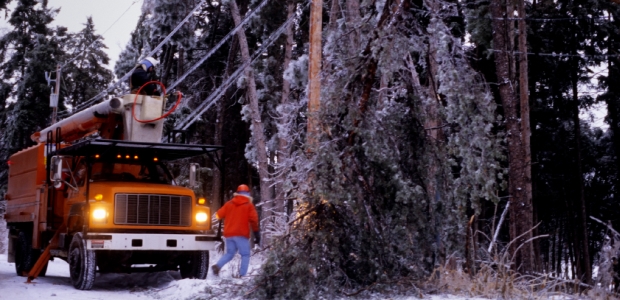
NIOSH Offers Tips for Working in the Cold
Given that northern states from Washington to Maine are expecting snow and rain this week, the agency’s timely tips can help workers steer clear of cold stress.
Snow and rain are forecasted in many northern U.S. states this week, with winter temperatures to match. And that makes new tips from NIOSH for anyone working in the cold very timely. NIOSH Director Dr. John Howard shared them in his latest "From the Director's Desk" post/email, beginning his message this way:
"Don't assume there is no need to prepare for working safely in the cold this year, because of the moderate temperatures in much of the country so far. According to the National Weather Service , the long-range weather forecast predicts chillier temperatures than average in January and February in the Southern Plains and the Southeast. Cold weather can bring on health emergencies for people who may be susceptible as a result of their working environment, such as those who work outdoors or in an area that is poorly insulated or without heat."
He went on to discuss the threat of cold stress: "What constitutes cold stress and its effects can vary across different areas of the country. In regions relatively unaccustomed to winter weather, near-freezing temperatures are considered factors for cold stress. Whenever temperatures drop decidedly below normal and as wind speed increases, heat can more rapidly leave your body, leading to cold-related injuries and illnesses." These include hypothermia, cold water immersion, frostbite, trench foot, and chilblains, Howard wrote.
His message included tips for employers and workers.
Tips for Employers
- Schedule maintenance and repair jobs in cold areas for warmer months.
- Schedule cold jobs for the warmest part of the day.
- Reduce the physical demands of workers.
- Use relief workers or assign extra workers for long, demanding jobs.
- Provide warm liquids to workers.
- Provide warm areas for use during break periods.
- Monitor workers who are at risk of cold stress.
- Provide cold stress training.
Tips for Workers
- Wear appropriate clothing.
- Wear several layers of loose clothing. Layering provides better insulation.
- Tight clothing reduces blood circulation. Warm blood needs to be circulated to the extremities.
- Choose clothing that won't restrict movement, which could lead to a hazardous situation.
- Make sure to protect the ears, face, hands, and feet in extremely cold weather.
- Boots should be waterproof and insulated.
- Wear a hat; it will keep your whole body warmer.
- Move into warm locations during work breaks. Limit the amount of time outside on extremely cold days.
- Carry cold-weather gear, such as extra socks, gloves, hats, jacket, and blankets; a change of clothes; and a thermos of hot liquid.
- Include a thermometer and chemical hot packs in your first aid kit.
- Avoid touching cold metal surfaces with bare skin.
- Monitor your physical condition and that of your co-workers.